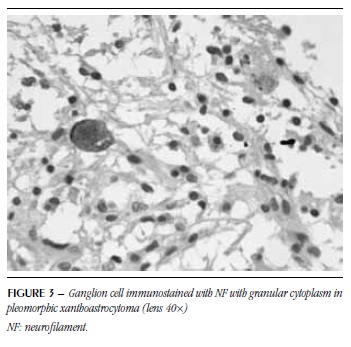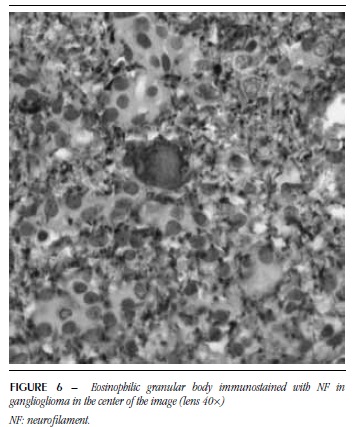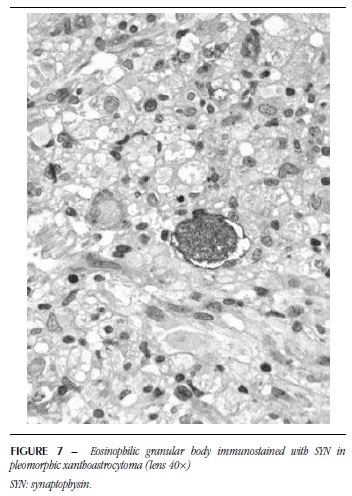INTRODUCTION: Glial and neuroglial cell neoplasms comprise pilocytic astrocytoma (PA), pleomorphic xanthoastrocytoma (PXA) and ganglioglioma (GG), which share various similarities, though PA has better prognosis. As ganglion cells (GC) may be scarce in GG and these gangliogliomas may recur or progress to grade III, an accurate diagnosis is essential. OBJECTIVES: The aim was to identify GC and eosinophilic granular bodies (EGB) in PA and PXA, to evaluate its effect on patient’s outcome and compare them with GG. METHODS: A retrospective analysis of radiological, morphological and follow-up aspects (disease free-survival, recurrence and death) of 30 cases (14 PA, 8 PXA, 8 GG). Hematoxylin and eosin (HE) stained sections were reviewed to identify the presence of neoplastic GC and EGB. They were immunostained for synaptophysin (SYN) and neurofilament (NF). Glial fibrillary acidic protein (GFAP) immunostaining was performed in selected cases. RESULTS: Six PA were reclassified as GG due to the presence of GC by HE or immunohistochemistry. Some EGB resembling degenerate GC were also immunostained for SYN/NF and most of them were negative for GFAP. The mean disease-free survival was 62.16 months. Four tumors recurred and one patient died. All PXA had GC, suggesting that they were variants of GG, 4 of which recurred and one patient died. Mean disease-free survival was 69 months. The radiological aspect was predominantly cystic. CONCLUSION: We propose that PA and PXA with GC or with EGB immunopositive for neuronal markers could be variants of GG, and some EGB may represent degenerate GC. However, the presence of GC does not seem to modify the biological behavior of these neoplasms.
pilocytic astrocytoma; pleomorphic xanthoastrocytoma; ganglioglioma; ganglion cell; eosinophilic granular bodies; classification













